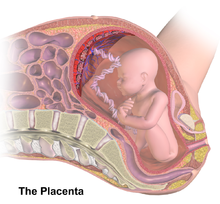 The issue of plastics, the chemicals they contain, and the harms to human health has been documented in a new report from the international Endocrine Society. This is a problem that won't go away because plastic use is increasing throughout the world, we use plastic products every day, we are surrounded by plastics, and they are now everywhere in our environment.
The issue of plastics, the chemicals they contain, and the harms to human health has been documented in a new report from the international Endocrine Society. This is a problem that won't go away because plastic use is increasing throughout the world, we use plastic products every day, we are surrounded by plastics, and they are now everywhere in our environment.
Chemicals leach out of the plastics and so get into us, wildlife, and the environment. Plastics also degrade into tiny particles called microplastics over time - which is why we find tiny plastic particles in our water, air, house dust, foods, beverages, and even in our bodies and feces.
Plastics can contain endocrine (hormone) disrupting chemicals, which can disturb or disrupt the body’s hormone systems. They can cause cancer, diabetes, reproductive disorders (e.g. fertility problems, lowered sperm count), neurological impairments (e.g. lower IQ) of developing fetuses and children, and death. Fetuses, babies, and young children are especially vulnerable to these chemicals. [More posts on this topic.]
 More than a thousand manufactured chemicals that are used nowadays are endocrine disrupting chemicals, also called EDCs. Some examples of common EDCs are bisphenols (e.g.BPA and BPS), phthalates, flame retardants, water and stain-resistant chemicals, and non-stick coatings in cookware. They are found in many household and personal care products, and toys (e.g. vinyl toys).
More than a thousand manufactured chemicals that are used nowadays are endocrine disrupting chemicals, also called EDCs. Some examples of common EDCs are bisphenols (e.g.BPA and BPS), phthalates, flame retardants, water and stain-resistant chemicals, and non-stick coatings in cookware. They are found in many household and personal care products, and toys (e.g. vinyl toys).
And no, the US government is doing nothing about this issue. Right now it is up to us individually to try to protect ourselves and to lower our exposures to endocrine disrupting chemicals and other harmful chemicals. List of things you can do: Tips to reduce harmful chemical exposures and levels in your body. [For ex.: Microwave food only in regular dishes. Not in plastic containers or pouches.]
The Endocrine Society (a global society of physicians and scientists) came out with a report documenting the harms of endocrine disrupting chemicals (EDCs) in plastics. Their Dec. 10, 2020 announcement: Plastics, EDCs & Health: Authoritative Guide, contains a link to the full report.
The Endocrine Society has a two page really nice summary and explanations of the types of chemicals found in plastics: 7 Harmful Chemical Types in Plastics [They are bisphenols, alkylphenols, phthalates, perfluorinated chemicals, brominated flame retardants, dioxin, and UV stabilizers.]
From Medical Xpress: Plastics pose threat to human health
Plastics contain and leach hazardous chemicals, including endocrine-disrupting chemicals (EDCs) that threaten human health. An authoritative new report, Plastics, EDCs, & Health, from the Endocrine Society and the IPEN (International Pollutants Elimination Network), presents a summary of international research on the health impacts of EDCs and describes the alarming health effects of widespread contamination from EDCs in plastics. ...continue reading "New Report On Harms to Human Health From Chemicals In Plastics"

 Microplastics, which are tiny pieces of plastic particles less than 5 millimeters in size, have now been found in human placentas. To find tiny plastic particles on both sides of the placenta (the baby's side and the mother's side), as well as in the placental membranes, is an alarming finding! Why is this occurring? And are they causing harm to the developing fetus?
Microplastics, which are tiny pieces of plastic particles less than 5 millimeters in size, have now been found in human placentas. To find tiny plastic particles on both sides of the placenta (the baby's side and the mother's side), as well as in the placental membranes, is an alarming finding! Why is this occurring? And are they causing harm to the developing fetus?
 This is rarely mentioned, but there is research showing that commonly used chemicals that we are exposed to, such as bisphenols (BPA, BPS), phthalates, persistent organic pollutants (e.g.flame retardants, nonstick cookware), heavy metals (e.g. lead), and some pesticides (e.g.chlorpyrifos, glyphosate), all have an impact on the gut microbiome in animals and humans.
This is rarely mentioned, but there is research showing that commonly used chemicals that we are exposed to, such as bisphenols (BPA, BPS), phthalates, persistent organic pollutants (e.g.flame retardants, nonstick cookware), heavy metals (e.g. lead), and some pesticides (e.g.chlorpyrifos, glyphosate), all have an impact on the gut microbiome in animals and humans. Achieve dramatically lower pesticide levels in your body in a few days! No need for "colonics" or "detox regimens". All one has to do is eat organic food to lower pesticide levels! And the more organic food in the diet, the better.
Achieve dramatically lower pesticide levels in your body in a few days! No need for "colonics" or "detox regimens". All one has to do is eat organic food to lower pesticide levels! And the more organic food in the diet, the better.